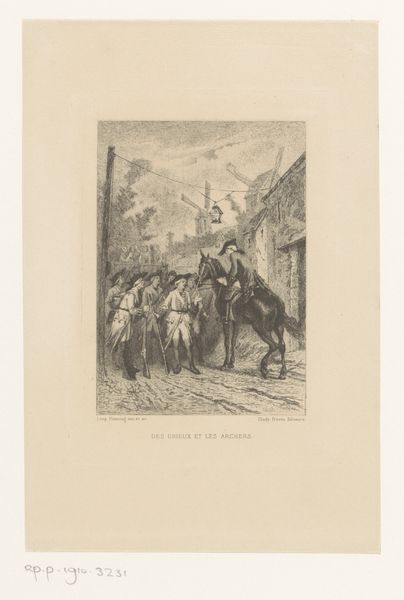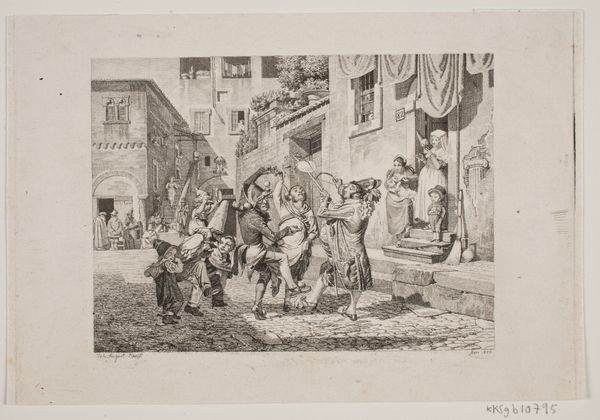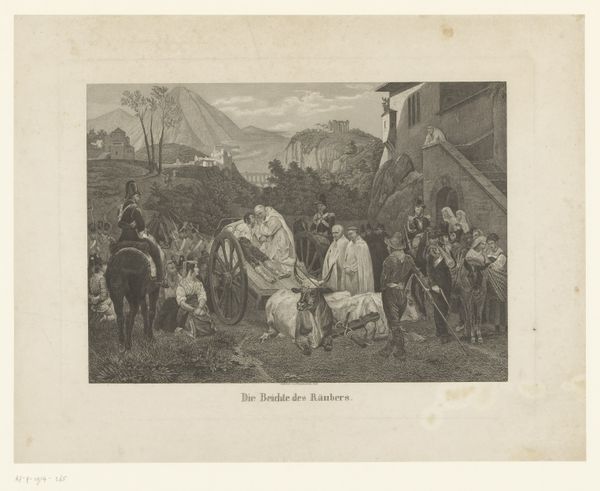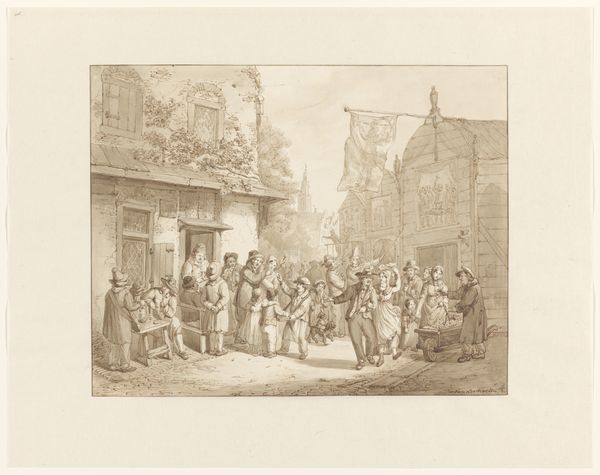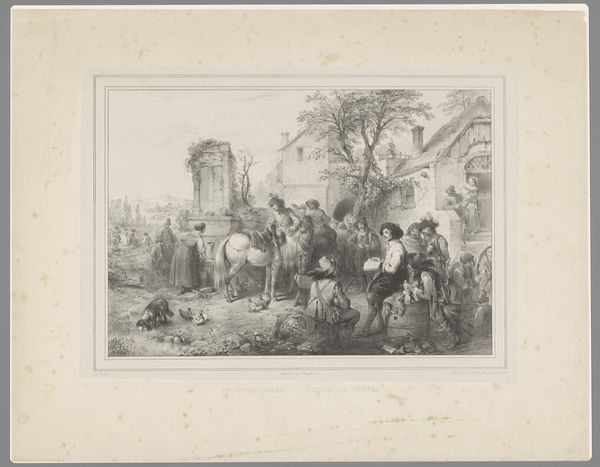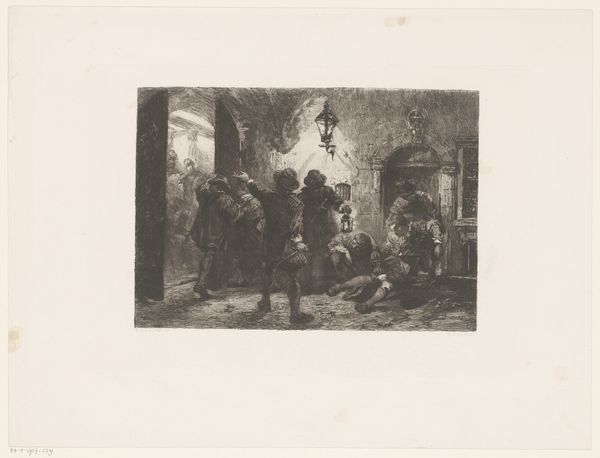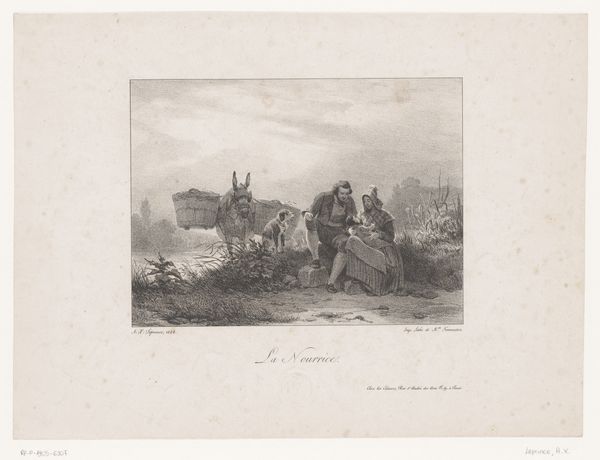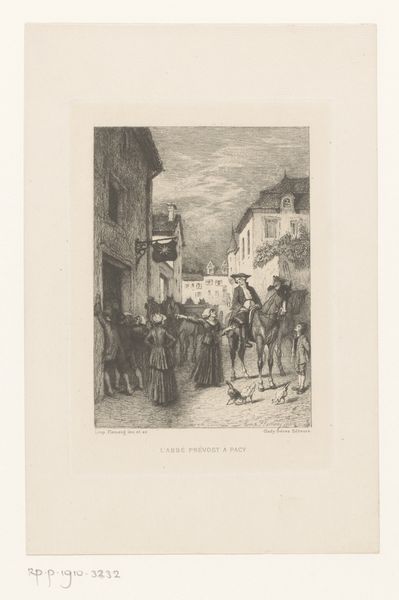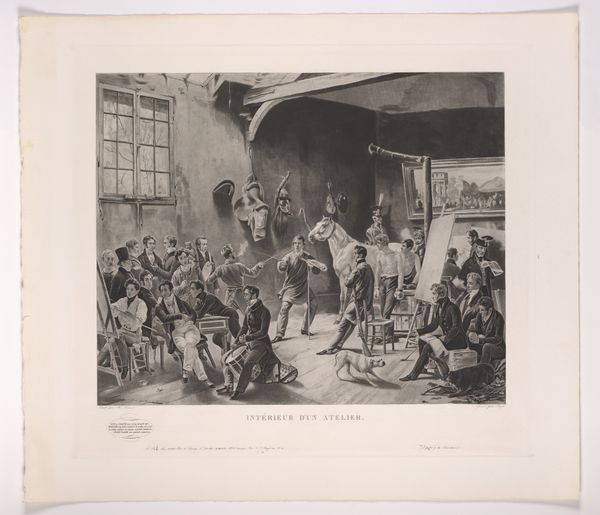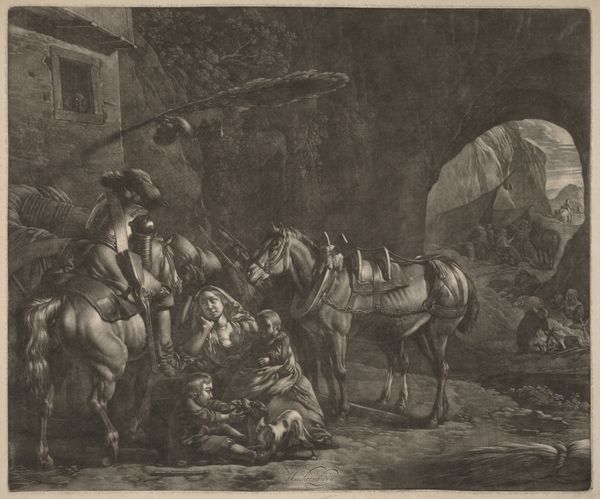
print, engraving
# print
#
landscape
#
genre-painting
#
engraving
#
realism
Dimensions: height 525 mm, width 635 mm
Copyright: Rijks Museum: Open Domain
Curator: This is "Boze menigte met hooivorken en hellebaarden," or "Angry Crowd with Pitchforks and Halberds," an 1874 engraving by Adolf Wagenmann. Editor: What a chilling scene. The stark contrast between light and shadow immediately gives me a sense of unease. It's like a stage, and the villagers are preparing to enact something terrible. Curator: The title certainly foreshadows that. We see a community mobilized, and I think it is important to analyze their agency. This work touches upon themes of collective identity, specifically the power dynamics that emerge when a community feels threatened. Consider, who is being targeted and why? Editor: Right, and that's the power of symbols, isn't it? The pitchforks and halberds speak volumes. They're tools of the common worker, now repurposed as weapons, signalling both desperation and resolve. Halberds evoke medieval peasant uprisings and are historically symbols of the lower classes pushing back against oppression. Curator: Indeed. And look at the figures themselves. Wagenmann has chosen to depict them not as a homogenous mass but as individuals, each with their own concerns etched on their faces. It raises questions about the social pressures to conform, the fear of ostracism, and the ethics of collective action. Is this resistance or something more sinister? Editor: The clothing helps tell that story. They're dressed in regional attire which speaks to local culture. I see continuity—these tools become emblems of their shared history and culture, as defense symbols rather than aggressors. Curator: An interesting interpretation. To me, that shared cultural heritage could be fueling the kind of closed-mindedness that allows injustice to take root. How are shared rituals and identity twisted into persecution or marginalization of outside groups? Editor: It makes one question how cultural pride evolves, doesn't it? A powerful engraving, to be sure. It pulls from cultural touchstones and presents it to a late 19th century audience who, I suspect, were equally primed for this kind of local unity and prejudice. Curator: Absolutely. And even now, looking at the print through our contemporary lens, we can use its social messaging as a critical probe into social inequalities today. It remains tragically relevant. Editor: Indeed, these recurring images of social anger remind us that past is never truly past.
Comments
No comments
Be the first to comment and join the conversation on the ultimate creative platform.
